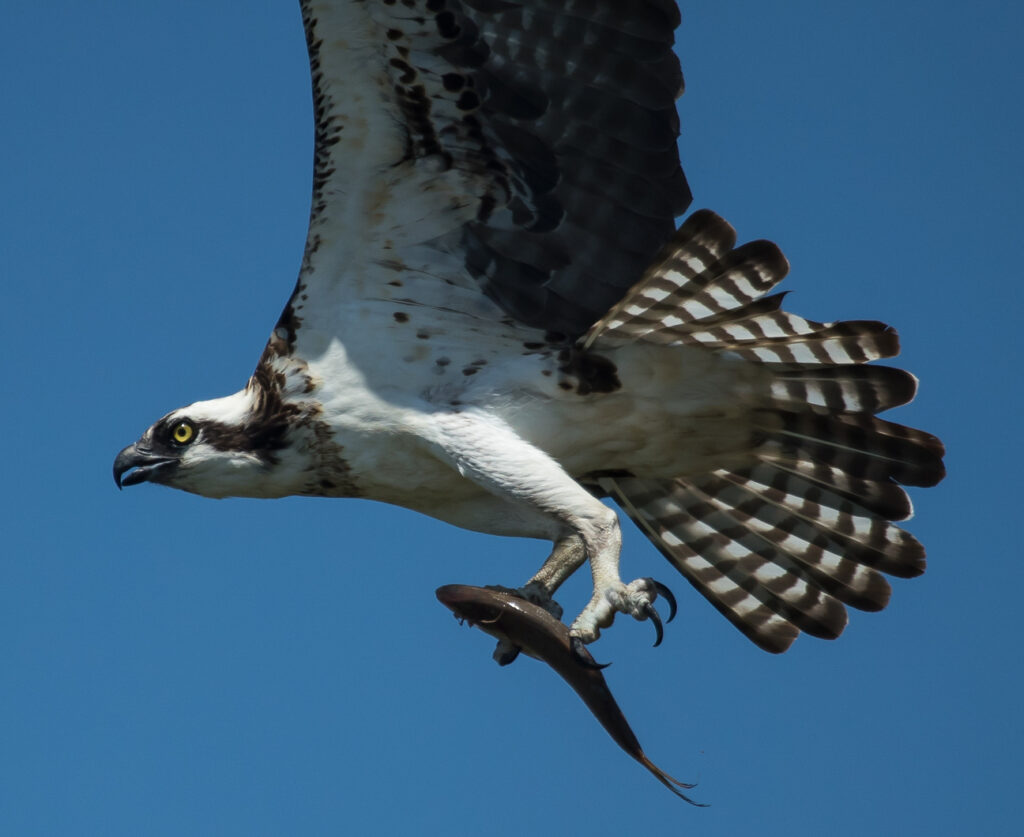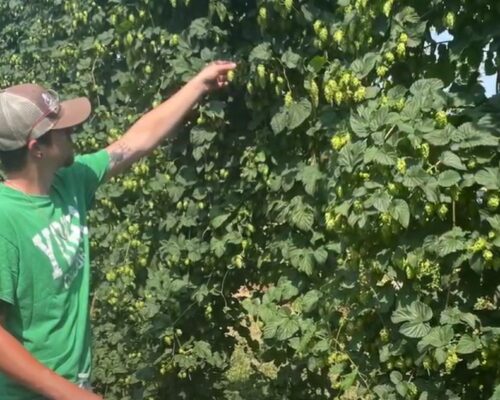New research from the Center for Conservation Biology (CCB) brings worrisome observations about poor osprey nesting success in higher-salinity parts of the Chesapeake—like Mobjack Bay, the lower York River and the Lynnhaven River.
According to the research, it’s an alarming contrast from upriver nests where the salinity is lower.
Surveys of 167 nests from this spring in Mobjack Bay (Ware River, North River, and East River), the lower York River, and the Lynnhaven River, where salinity is high, showed that only 17 were successful, producing 21 surviving young. That reproductive rate is less than 30% of what is needed for the osprey population to break even.
Meanwhile, 91 nests in upriver tidal but fresh waters of the James River (Weyanoke to Dutch Gap) and the Rappahannock (Tappahannock to Tobys Point) were also surveyed. 73 of the 91 nests were successful, producing 133 young. That is nearly 4.5 times higher than the rate in higher salinity waters.
The difference is stark, and it appears to be not coincidental. Why? The diets of the ospreys in the two environments are quite different. In the fresh waters upriver, the birds primarily eat are small blue catfish and gizzard (“mud”) shad. Those species are abundant.
In high salinity waters, the osprey’s preferred food is menhaden, a fish that is highly nutritious and relatively easy for the birds to catch because they school in large numbers close to the surface of the water.
Sadly, observations suggest that even adult ospreys had a difficult time finding enough food for themselves, much less their chicks, who were reported to have died of starvation shortly after hatching.
Long-term studies of Chesapeake ospreys by the Center for Conservation Biology (CCB) show a dramatic rise in the overall population of the birds of prey after DDT was banned in 1972, peaking in the mid-1980s. Then it slowly declined as “fish delivery rates to osprey nests dropped by more than 50 percent and the importance of menhaden in the diet also dropped by 50 percent,” according to a post last week on the CCB website by Dr. Brian Watts, the Center’s Director.
Watts’ new research focuses on a possible shortage of menhaden as a culprit for ospreys failing to raise healthy babies. As an experiment, his team delivered extra menhaden to nesting ospreys to see if it would help them survive.
“For most pairs, fish availability in Mobjack Bay is not adequate to raise even a single young. The study conducted in 2021 demonstrated that experimental supplementation of nests with menhaden was effective in reducing starving rates and driving productivity above maintenance levels,” the study reads.
They conclude, “This result suggests that if the menhaden population [in the Chesapeake Bay] was allowed to recover, osprey could return to sustainable reproductive rates.”
The 2021 study, conducted by CCB graduate student Michael H. Academia and Dr. Watts and published this past April, compared side by side the nests which had menhaden delivered to them and nests that didn’t.
The study ends with the statement, “The menhaden population within Mobjack Bay is not currently adequate to sustain the osprey breeding population and we recommend that industrial purse seine fishing occur outside Chesapeake Bay.”
That conclusion points the finger directly at Omega Protein, which dominates the Bay’s menhaden industry using purse seine fishing. Anglers, charter fishing companies and environmentalists have been calling for an end to menhaden fishing inside the Chesapeake Bay.
But regional fishery managers haven’t found menhaden to be in trouble, at least when you look at the East Coast as a whole. Based on their most recent assessment (2022), Atlantic States Marine Fisheries Commission (ASMFC) considers the total coastal menhaden stock to be “neither overfished nor experiencing overfishing.”
However, current research methods remain unable to determine whether the fish are depleted in any local areas within the species’ broad coastwide range—like inside the Chesapeake Bay, which serves as a nursery for young Atlantic menhaden.
The Atlantic States Marine Fisheries Commission (ASMFC) has begun background work on a Benchmark Stock Assessment for Atlantic menhaden to be conducted coastwide in 2025. It’s possible this new osprey study will be taken into account.
But the schools of menhaden move constantly and there is no conclusive data yet to prove or disprove the localized depletion of fish that the osprey research appears to indicate.
ASMFC’s 2025 assessment will still consider the Atlantic stock as a whole, but fishery managers are prioritizing finding research methods that can better assess regional and local conditions.
–John Page Williams




